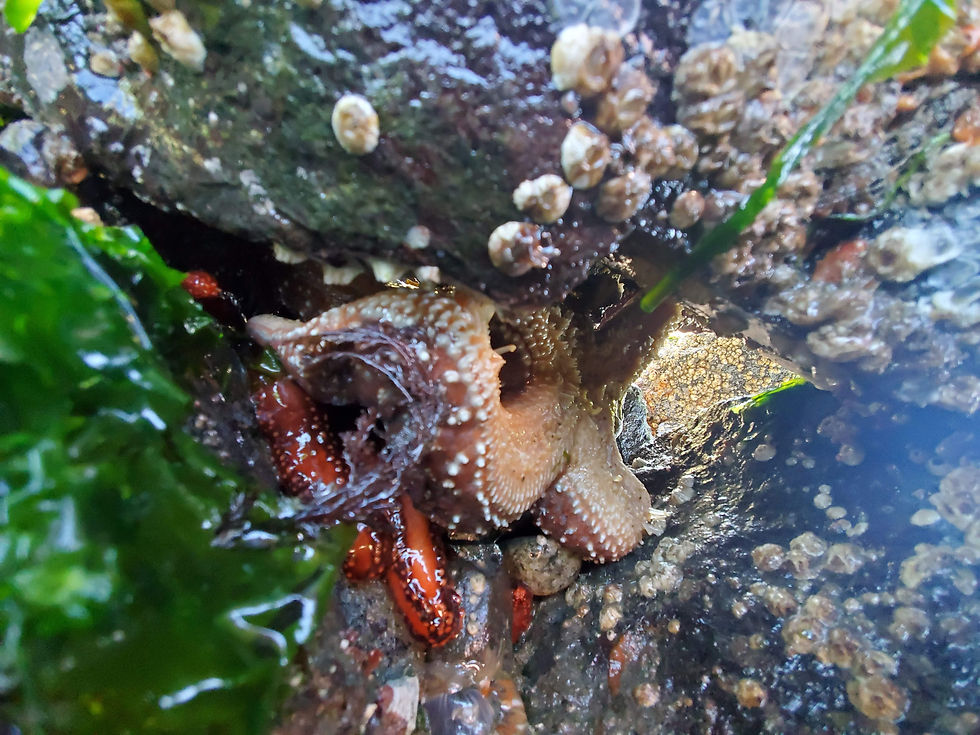
Discovery Park is the crown jewel of Seattle Parks. Its territory includes land that was important to the native ancestors of the Suquamish, Duwamish, Muckleshoot and Tulalip nations. There is evidence that up until end of the last glacial period, for almost 10,000 years, people have used this land for trade, gathering resources, meeting and preparing food. It is a very special place.
An optimal low-tide route starts at the North Beach, about a thirty minute walk from the north parking lot. You'll want to get here at least an hour before the lowest tide. From here you can make your way south, around West Point Lighthouse, all the way to the Magnolia Bluffs.
There are a few notable features on this route. About halfway between North Beach and the lighthouse there is a patch of rocks entrenched in seaweed. There is much to be explored here! Stay towards the edges of this system- the interior is quite slick and you are at high risk of stepping on someone. As you round the point at the lighthouse, significant sandbars develop. These are quire interesting, especially where the water is trapped. Keep going and you will get back to boulder territory where additional hidden treasures await.
LOCATION
There is no parking except by special permit at the Discovery Park beach. Fortunately every trail down is delightful, just pick any heading west and down to the water. As long as you don't venture to far north or south of the boarders of the park you won't need to watch the tide too closely, just be aware. The best sandbars can be found just south of the lighthouse, in a more popular area. There is an excellent rock patch to explore north of the lighthouse, heading towards the North Beach. There are additional large rocks to poke around just a bit further south of the sand bars.























